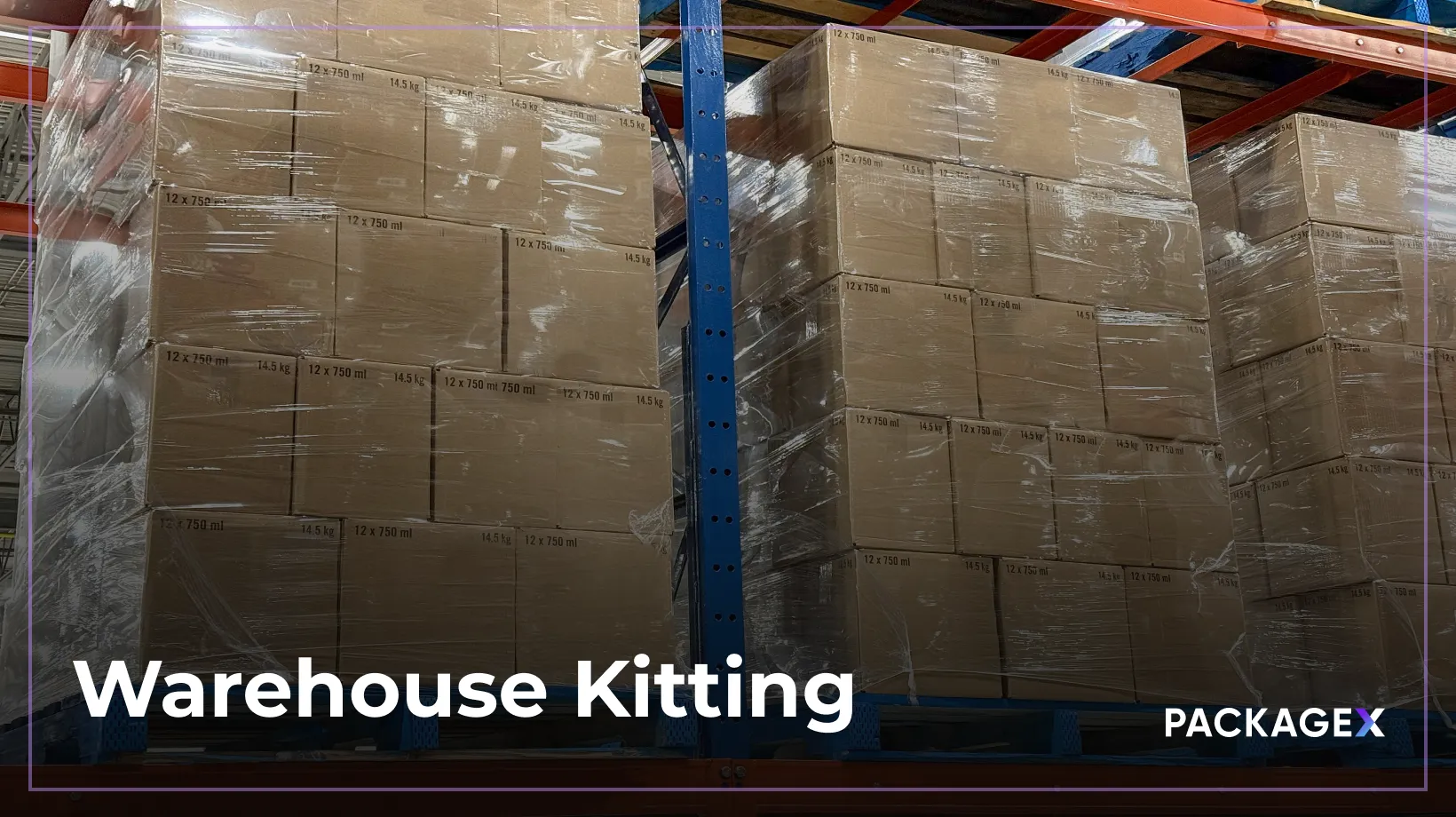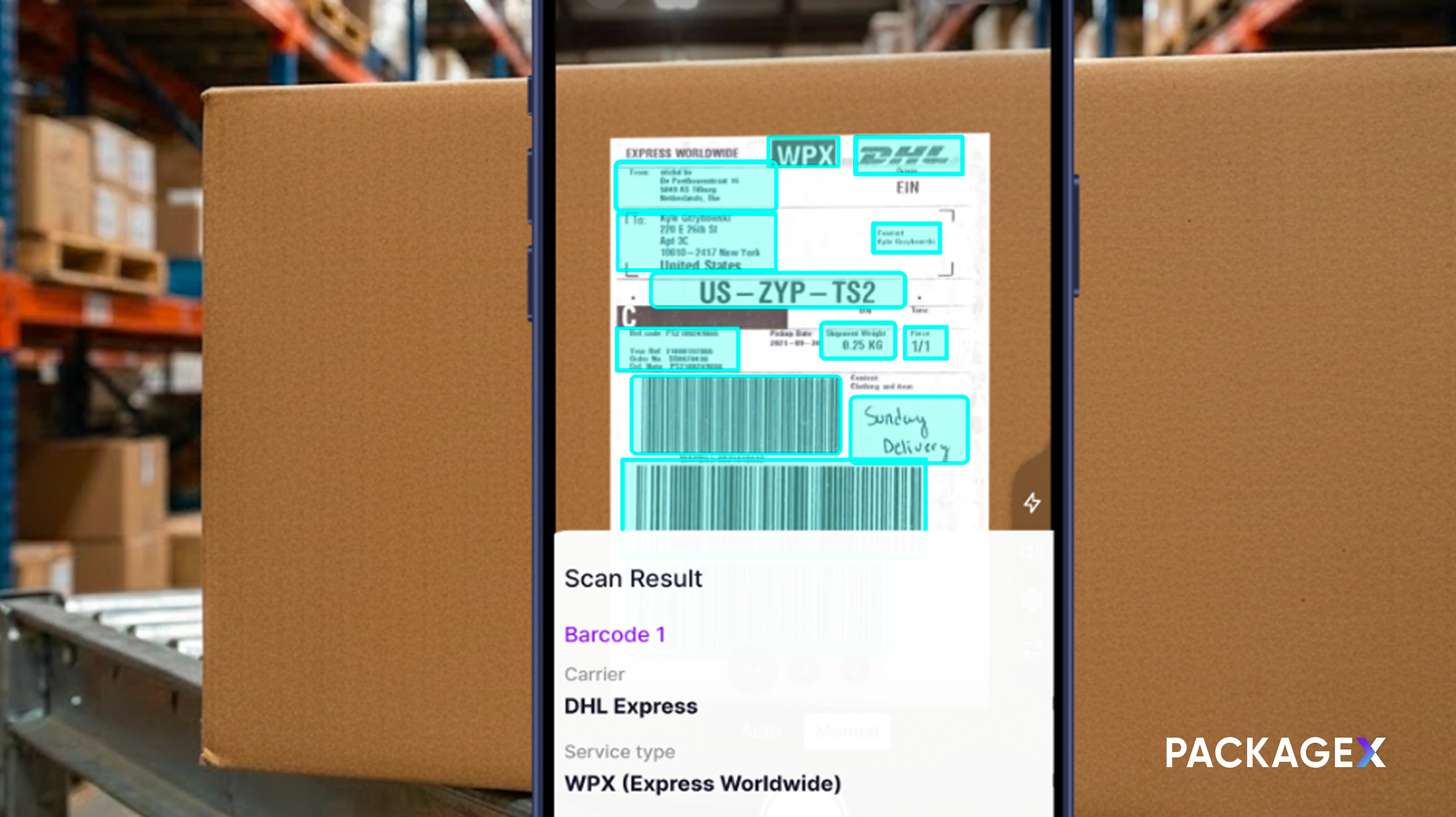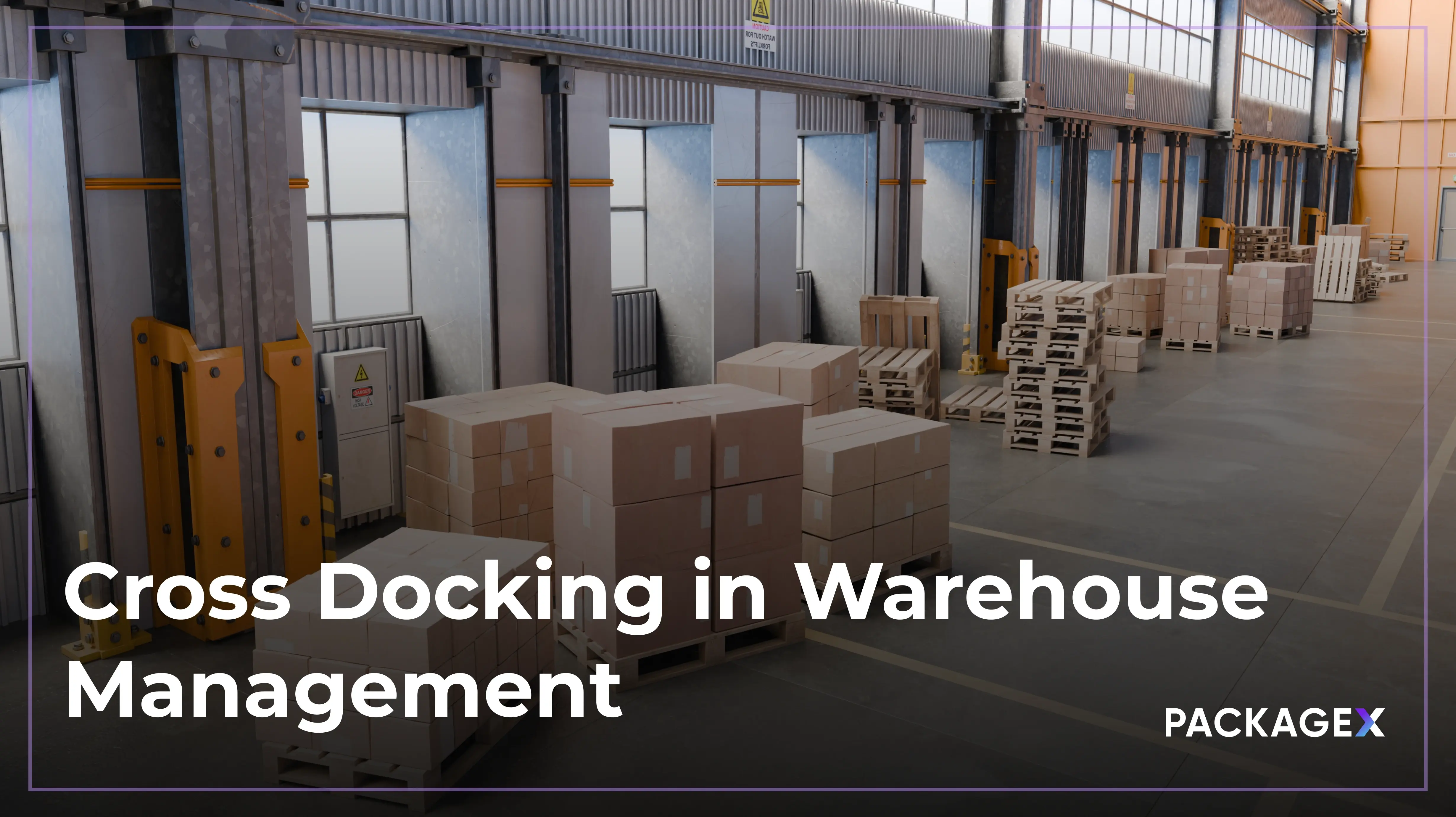Warehouses are under more pressure than ever. Efficiency has become the heart of every successful operation. Businesses that once relied on manual processes are now turning to smarter fulfillment to stay competitive.
The shift makes sense. As operations scale, even small inefficiencies can add up to major time and cost losses. Such as extra steps in picking, packaging, or labelling. Companies are looking for ways to simplify how inventory moves through the warehouse without sacrificing accuracy or customer satisfaction.
The timing couldn’t be more critical. The global warehousing and storage market is projected to grow at a CAGR of 4.50%, reaching USD 792.64 billion by 2034. This growth reflects a broader trend. That businesses are investing heavily in process optimization and automation. These specialized fulfillment services need to keep pace with demand.
Among these innovations, one approach has quietly become a game-changer for many logistics teams and 3PL fulfillment providers. It helps streamline workflows, reduce labor costs, and create a smoother connection. Between storage, assembly, and shipping.
As we move through this blog, we’ll look at how this strategy works inside a kitting warehouse. What makes it so effective, and how it’s reshaping modern fulfillment and manufacturing environments.
What Is Warehouse Kitting?
Warehouse kitting is the process of grouping related products or components and packaging them together as a single unit before shipping. Instead of picking and packing each item individually, the items are pre-assembled into kits that can be stored, tracked, and shipped as one. This simple shift makes the fulfillment process faster and more accurate.
In a traditional setup, each SKU is picked one by one, which takes more time and increases the chance of mistakes. With kitting, the warehouse prepares complete sets in advance, reducing handling steps and speeding up order fulfillment. This approach is often used in e-commerce, retail, and manufacturing to streamline operations and improve inventory control.
The kitting process in warehouse settings also supports better space utilization and smoother workflows. Within kitting in warehouse management systems, each kit is assigned a unique SKU, allowing easier tracking and reporting. Businesses often rely on warehouse kitting services and fulfillment partners or 3PL providers to handle these tasks efficiently.
How the Warehouse Kitting Process Works?
Here’s how the warehouse kitting process works:
Step 1: Identify Related SKUs and Components
The kitting process in warehouse operations starts by identifying products that make sense together. These could be accessories for electronics, parts for a manufacturing kit, or items for a promotional bundle. Grouping related SKUs helps create ready-to-ship sets that save time and reduce picking errors. This step lays the foundation for an organized kitting warehouse setup and supports scalable manufacturing kitting solutions.
Step 2: Assemble and Package the Kit
Next, workers or automated systems gather the chosen items and assemble them into a single kit. Depending on the operation’s size, this can be done manually or through warehouse automation kitting tools. Proper packaging keeps each component secure and ensures the final product looks professional. Using the right warehouse kitting supplies also helps cut down on material waste and improve presentation.
Step 3: Assign and Track Unique SKUs
Once assembled, every kit gets its own SKU for easy tracking. This allows teams to monitor stock levels and fulfillment status in real time. Kitting in warehouse management systems ensures accuracy across locations and prevents double-counting or missed items. Accurate SKU tracking also helps streamline reordering and restocking.
Step 4: Label and Prepare for Shipment
Before storage or shipping, staff print and attach clear labels. Many companies rely on warehouse services for label kitting to ensure every package has the correct information. This step is key to efficient AI scanning, faster fulfillment, and reducing delivery errors.
Step 5: Store, Pick, and Ship as One Unit
The completed kit is stored as a single product, not individual items. When an order comes in, fulfillment teams pick the kit as one unit and send it out immediately. This approach allows fulfillment kitting services to move faster, cut labor costs, and boost accuracy. Together, these kitting and warehouse solutions create a smooth, efficient workflow from assembly to delivery.
The Warehouse Kitting Process: Step-by-Step Implementation Guide
Setting up a smooth warehouse kitting process starts with clear planning and small, consistent improvements.
Here’s a simple way to build an efficient system from the ground up.
1. Choose Items for Kitting in Warehouse
Begin by selecting products that are often ordered together or used in the same process. Look for items that naturally complement each other. This keeps your kits practical and easy to assemble.
2. Establish Workflow and Define SKUs
Once you know what to bundle, outline your warehouse kitting procedure. Assign each kit a unique SKU so it can be tracked, stored, and shipped as one complete unit.
3. Test Small Batch Assembly Runs
Before scaling, run a few test batches. This helps refine your kitting and warehouse workflow, allowing you to spot bottlenecks early.
4. Integrate Kitting and Warehouse Solutions
Use digital tools or warehouse management software to link your kitting process with inventory systems. It ensures updates happen automatically when stock levels change.
5. Monitor KPIs and Fulfillment Speed
Track how long it takes to assemble and ship each kit. Measuring accuracy keeps your warehouse kitting process efficient and reliable.
6. Scale with Warehouse Automation Kitting
Once the system runs smoothly, automation tools can handle repetitive tasks, saving time and improving consistency.
Key Benefits of Warehouse Kitting and Fulfillment
The following are some proven benefits of warehouse kitting:
1. Faster Order Processing
Warehouse kitting services speed up fulfillment by turning multiple products into one ready-to-ship unit. Workers spend less time picking individual items, which cuts labor hours and helps orders move out the door faster. This smoother workflow also means fewer bottlenecks during busy seasons.
2. Optimized Inventory Management
Kitting in warehouse management gives better visibility over stock levels. Instead of tracking each small part separately, teams can manage complete kits under a single SKU. It reduces confusion, keeps inventory managed, and helps prevent both overstocking and stockouts.
3. Reduced Shipping Costs and Fewer Errors
When kitting and fulfillment work together, shipping becomes simpler and cheaper. Packing pre-assembled kits lowers packaging waste and shipping weight. It also reduces picking errors since everything needed is already in one place, improving order accuracy and customer satisfaction.
4. Increased Sales
3PL kitting services make it easier to create product bundles and limited-time offers. By grouping related or seasonal items, businesses can move slow stock faster while giving customers better value. This strategy also boosts average order value.
5. Better Warehouse Space Utilization
Warehouse kitting and assembly help free up valuable space. Combining items into organized kits keeps storage areas cleaner and more efficient, allowing room for more products and smoother daily operations.
Common Warehouse Kitting Challenges
Here are some challenges that one might encounter:
SKU Proliferation
Too many SKUs in a kitting warehouse can confuse and make it harder to manage inventory. It often leads to tracking errors and slower fulfillment.
Labor Intensity
Kitting in warehouse operations can be labor-heavy. Manual assembly, labeling, and packaging increase time and cost, especially without efficient fulfillment systems in place.
Space Limitations
Limited space affects the flow of the warehouse kitting process. As more kits are prepared, storage areas can become crowded, reducing productivity and overall efficiency.
Quality Control
Mistakes during the warehouse kitting procedure, like missing parts, mislabels, or packaging errors, can impact fulfillment accuracy and harm customer trust.
How to Measure Kitting Performance (KPIs)?
Measuring how your kitting process performs helps maintain accuracy and efficiency across your warehouse operations. These KPIs show how well your warehouse kitting services support fulfillment goals.
1. Fulfillment Accuracy Rate
Tracks how often kits are picked, packed, and shipped without error. A high rate means your kitting in warehouse performance is consistent and reliable.
2. Order Cycle Time
Measures the time from order receipt to shipment. Shorter cycles show smoother workflows and faster warehouse kitting procedures.
3. Inventory Days of Supply
Reveals how long your current stock can fulfill orders. It’s key to balancing warehouse space, supply costs, and timely restocking.
4. Cost per Order
Shows the total expense to process and ship each kit, helping optimize fulfillment kitting services and reduce waste.
5. Orders Picked per Hour
Tracks how many kits staff prepare each hour, an essential warehouse kitting efficiency metric for evaluating productivity and workflow design.
Tips to Optimize Your Kitting Fulfillment Process
1. Plan and Organize Before You Start
- Define which products to group and how many kits to assemble.
- Consider item size, weight, and shelf life to ensure safe shipping.
- Set up an inventory tracking system for low-stock alerts and reorder reminders.
- Keep your kitting in warehouse operations simple and consistent for fewer errors.
2. Choose Packaging That Fits the Product
- Select packaging that protects items without adding unnecessary weight.
- Use inserts, bubble wrap, or custom-sized boxes for fragile products.
- Opt for eco-friendly materials to cut costs and support sustainability goals.
- Good packaging improves both warehouse kitting efficiency and customer satisfaction.
3. Streamline Your Workflow with Automation
- Integrate kitting and warehouse automation to reduce manual errors.
- Use barcode scanners and inventory management tools for faster picking.
- Automate repetitive tasks in the warehouse kitting process for smoother fulfillment.
- Track kits from assembly to shipment for full visibility.
4. Train and Support Your Warehouse Team
- Train employees on fulfillment kitting services, labeling, and quality control.
- Standardize the kitting process in warehouse operations with clear instructions.
- Encourage your team to share insights on improving warehouse kitting workflow.
- Well-trained staff ensure consistent accuracy and faster turnaround times.
5. Review and Improve Continuously
- Analyze key performance metrics like error rates and fulfillment time.
- Adjust warehouse layout and stock placement to speed up assembly.
- Regularly refine your warehouse kitting and assembly process based on data.
- Keep optimizing to maintain efficient, scalable 3PL kitting services.
Warehouse Kitting vs Other Fulfillment Methods
When it comes to order fulfillment, businesses can choose from several approaches. Each has its own strengths, depending on the type of products, order volume, and customer needs. Understanding these differences helps you pick the best method for your operations.
Kitting
The kitting process in warehouse operations involves putting related items together to create one ready-to-ship unit with a single SKU. This method works well for eCommerce stores and manufacturing setups that need accurate fulfillment. It saves time by reducing the number of individual picks and simplifying tracking through warehouse management systems.
Bundling
Bundling focuses on grouping products for promotions or seasonal offers. Unlike kitting, bundles usually keep their individual SKUs. It’s a favorite strategy in retail and marketing when businesses want to move inventory quickly or increase average order value.
Assembly
In warehouse kitting and assembly, components are combined to form a finished product before shipping. This approach suits manufacturers that rely on pre-staged materials for efficiency.
Pick and Pack
Pick and pack fulfillment handles items one by one. It’s best for smaller businesses or low-order volumes that don’t require complex kitting and fulfillment comparison systems.
Real-World Kitting and Fulfillment Use Cases
E-Commerce and Subscription Boxes
In kitting warehouse operations, online retailers use warehouse kitting services and fulfillment strategies to preassemble popular product sets or subscription boxes. This approach shortens pick-and-pack time, ensures consistent packaging, and supports high-volume inventory cycles during peak seasons.
Manufacturing Kitting Solutions
Manufacturing kitting solutions streamline assembly line operations by pre-staging components and tools into ready-to-use kits. This reduces downtime, prevents part shortages, and keeps production flowing smoothly. Many factories now use automated tracking to manage parts across multiple warehouse zones.
Promotional and Private Label Kitting
Brands rely on warehouse services for label kitting to assemble marketing bundles, limited-edition gift sets, and private-label kits. These kitting and fulfillment strategies make it easier to customize packaging, include promotional inserts, and deliver products that are retail-ready right out of the warehouse.
How PackageX Helps with Warehouse Kitting and Fulfillment?
Running a warehouse with lots of SKUs and frequent kit builds is hard if your tools are stuck in the past. PackageX gives you modern warehouse and fulfillment solutions built for real work.
Here’s how PackageX supports the kitting process in warehouse operations:
- AI-powered scanning & OCR: Scan barcodes, labels, bills of lading, inventory tags, even in low light or with damaged labels. Cuts down manual errors and speeds up fulfillment kitting services.
- Real-time inventory tracking: See where each component is, track stock levels, and set alerts for low stock. This tool is great for managing kits and avoiding shortages in kitting warehouse workflows.
- Flexible workflows and integrations: Connect your warehouse management system or ERP to PackageX via APIs. That means kits, orders, and fulfillment transfers flow smoothly, with no manual re-entry.
- Mobile-first tools: Use your phone or tablet to scan, label, receive, and ship. Makes kitting in warehouse management easier when teams are on the move or spread across sites.
- Warehouse receiving to shipping chain visibility: From dock to stock to final shipment, you get visibility into each stage. This service helps with quality control, order accuracy, and smoother fulfillment kitting services.
FAQs
What is kitting in a warehouse?
Kitting in a warehouse means combining related products or components into one ready-to-ship package with a single SKU. This kitting process in warehouse operations simplifies picking, packing, and shipping, helping teams work faster and reduce fulfillment errors.
What is the kitting process in warehouse management?
The kitting process in warehouse management involves selecting individual items, assembling them into kits, labeling them, and tracking them as one unit. It streamlines fulfillment, improves inventory visibility, and supports smoother order processing through integrated warehouse kitting supplies and solutions.
How do 3PL kitting services help e-commerce businesses?
3PL kitting services handle product assembly, labeling, and shipping on behalf of e-commerce brands. They save time, reduce costs, and allow sellers to focus on growth while experts manage the kitting and fulfillment process with accuracy and efficiency.
What are the main benefits of warehouse kitting and fulfillment?
Warehouse kitting and fulfillment improve efficiency, cut labor costs, and enhance order accuracy. Businesses benefit from faster shipping, better inventory control, and higher customer satisfaction through organized warehouse kitting services.
How can warehouse automation improve kitting efficiency?
Warehouse automation kitting tools use barcode scanning, AI vision, and smart workflows to speed up assembly and eliminate manual errors. Automated kitting in warehouse operations leads to greater accuracy, real-time visibility, and more efficient fulfillment cycles.




%20Process%20Flow.webp)